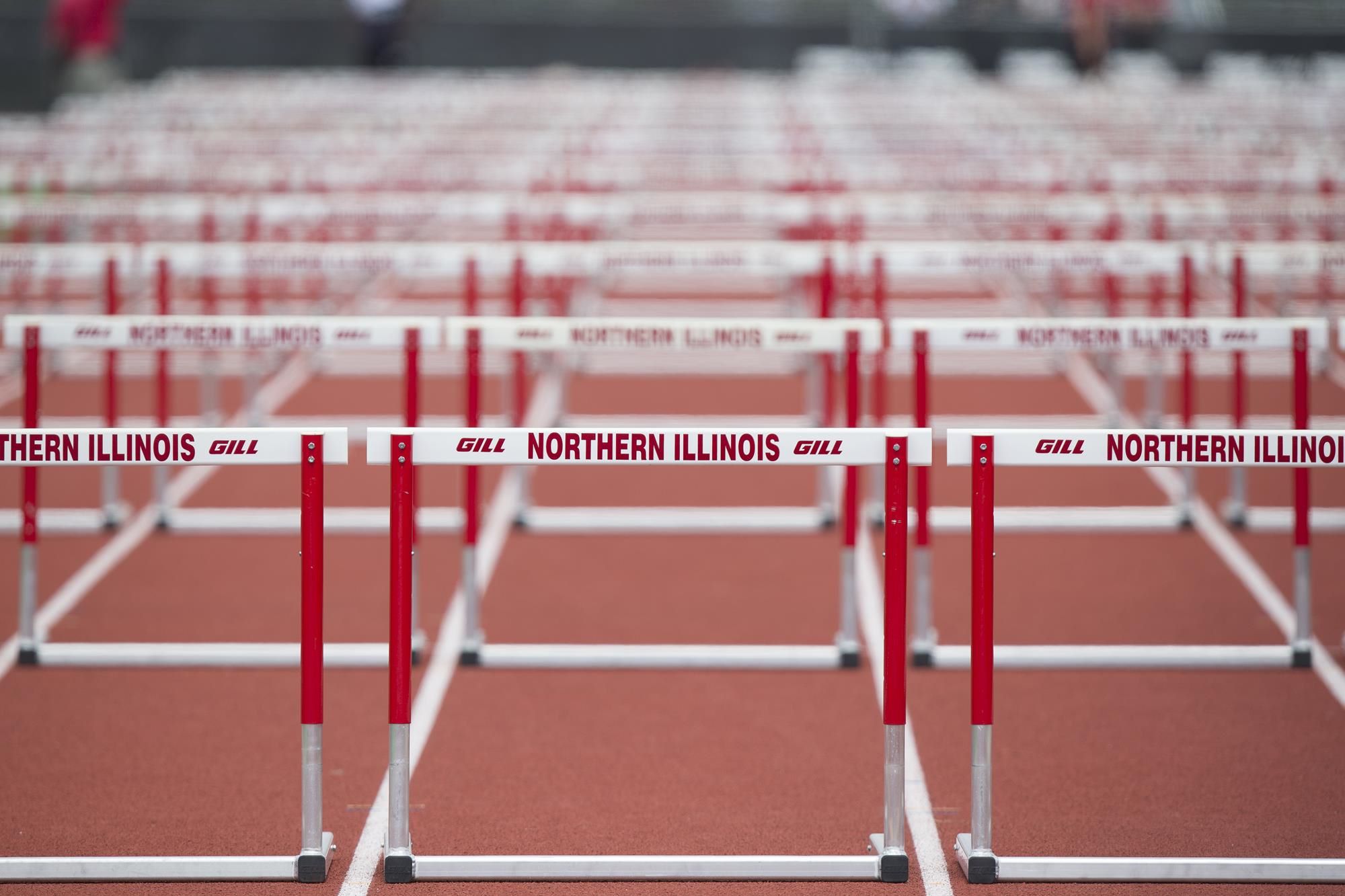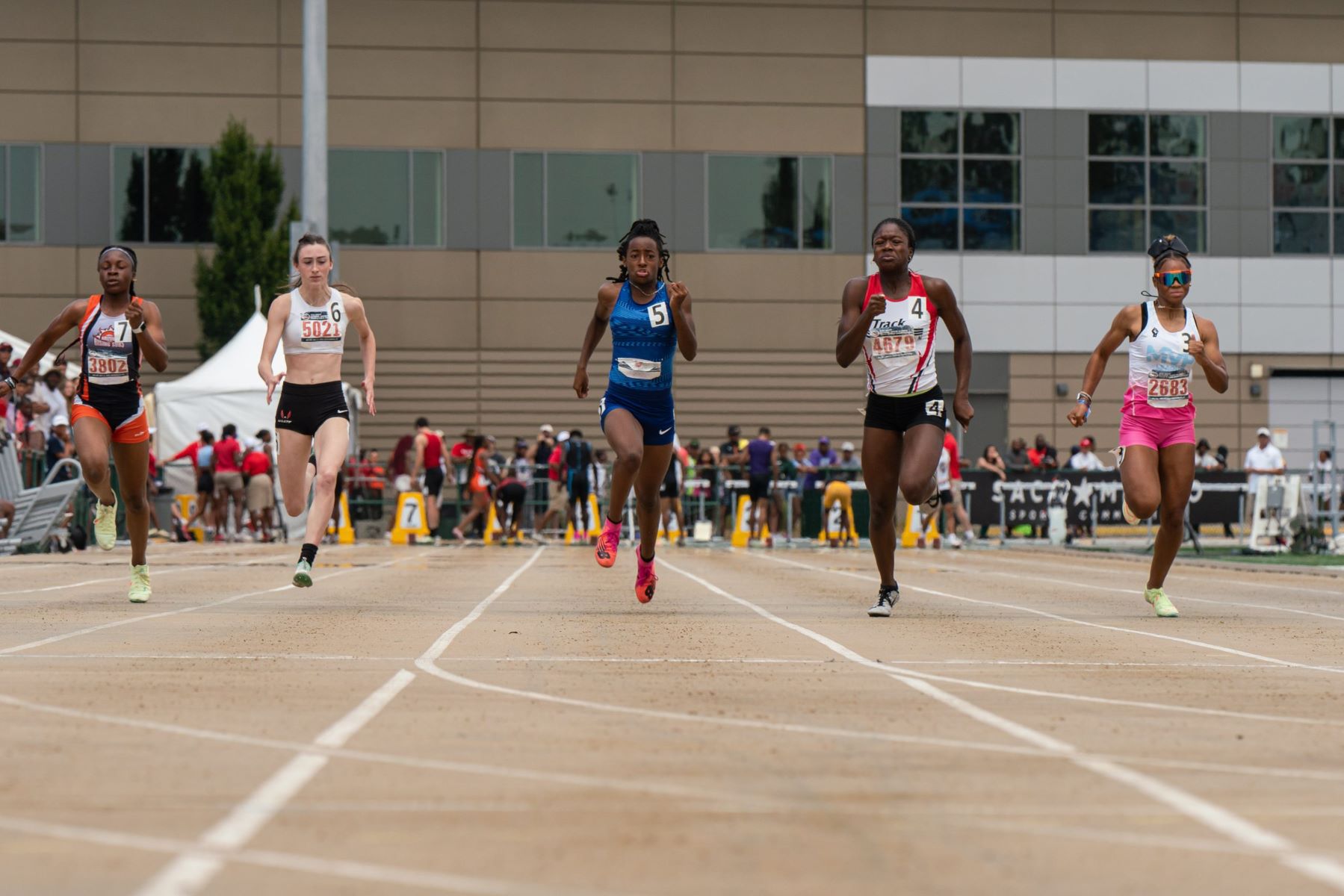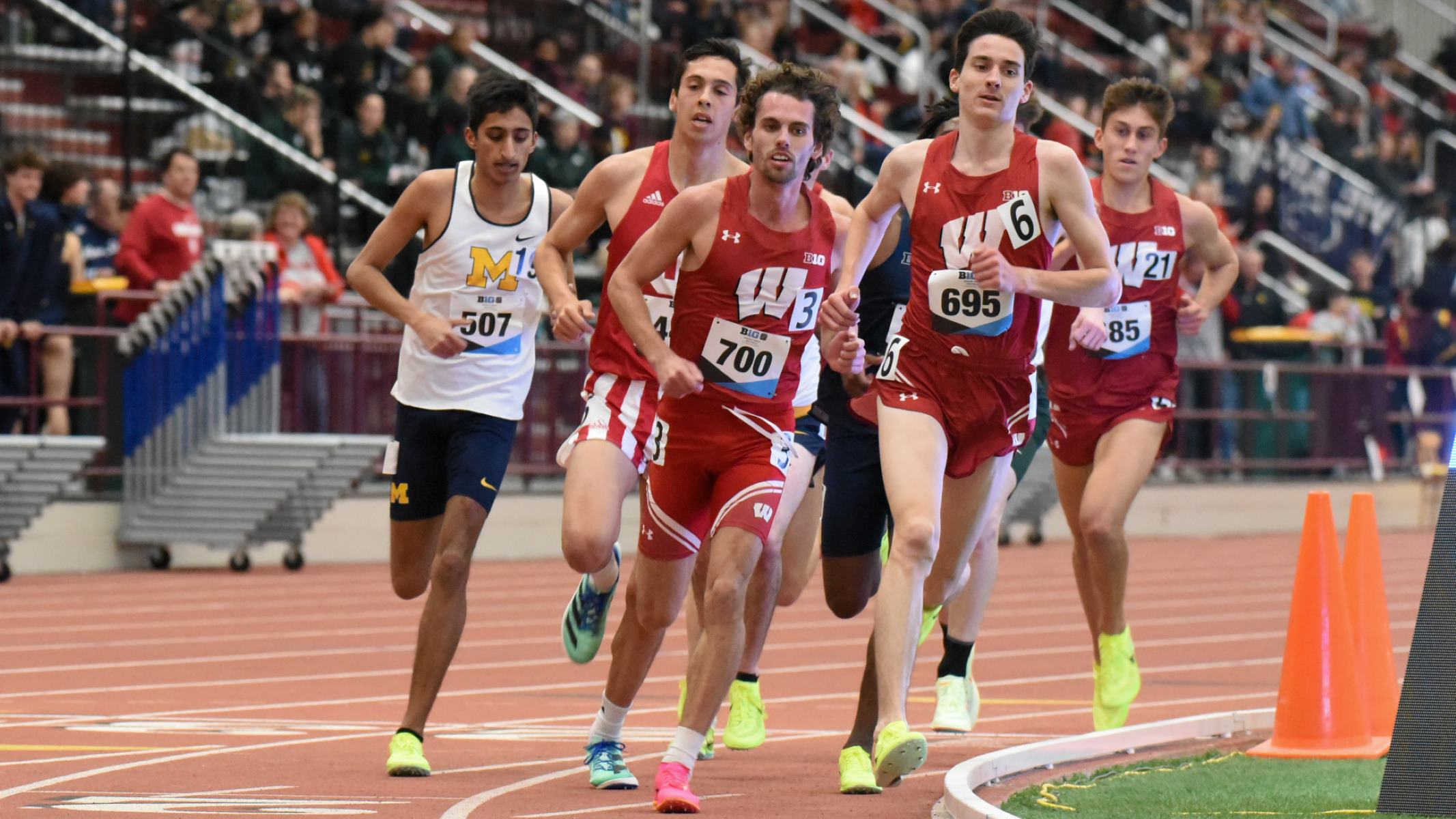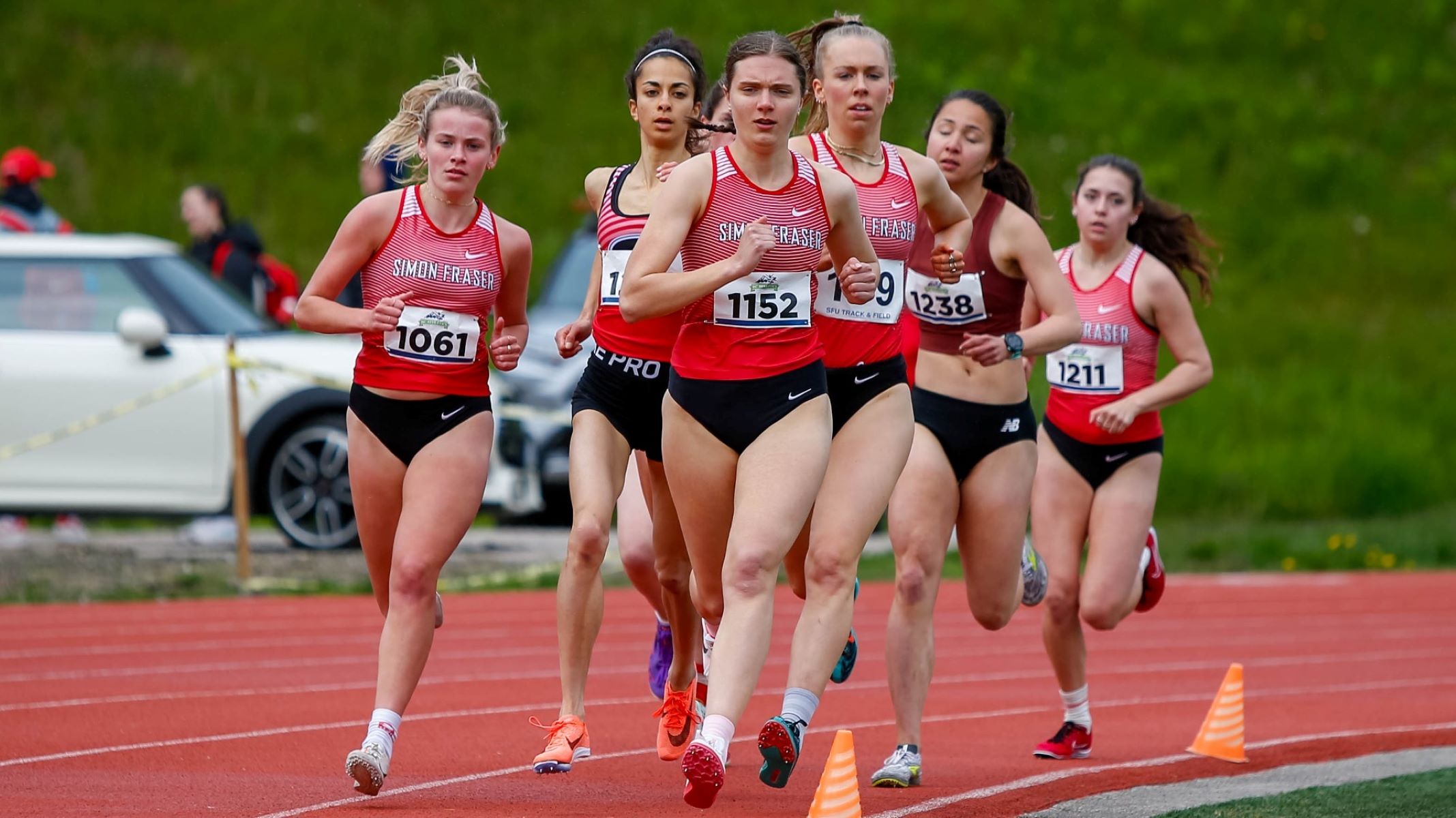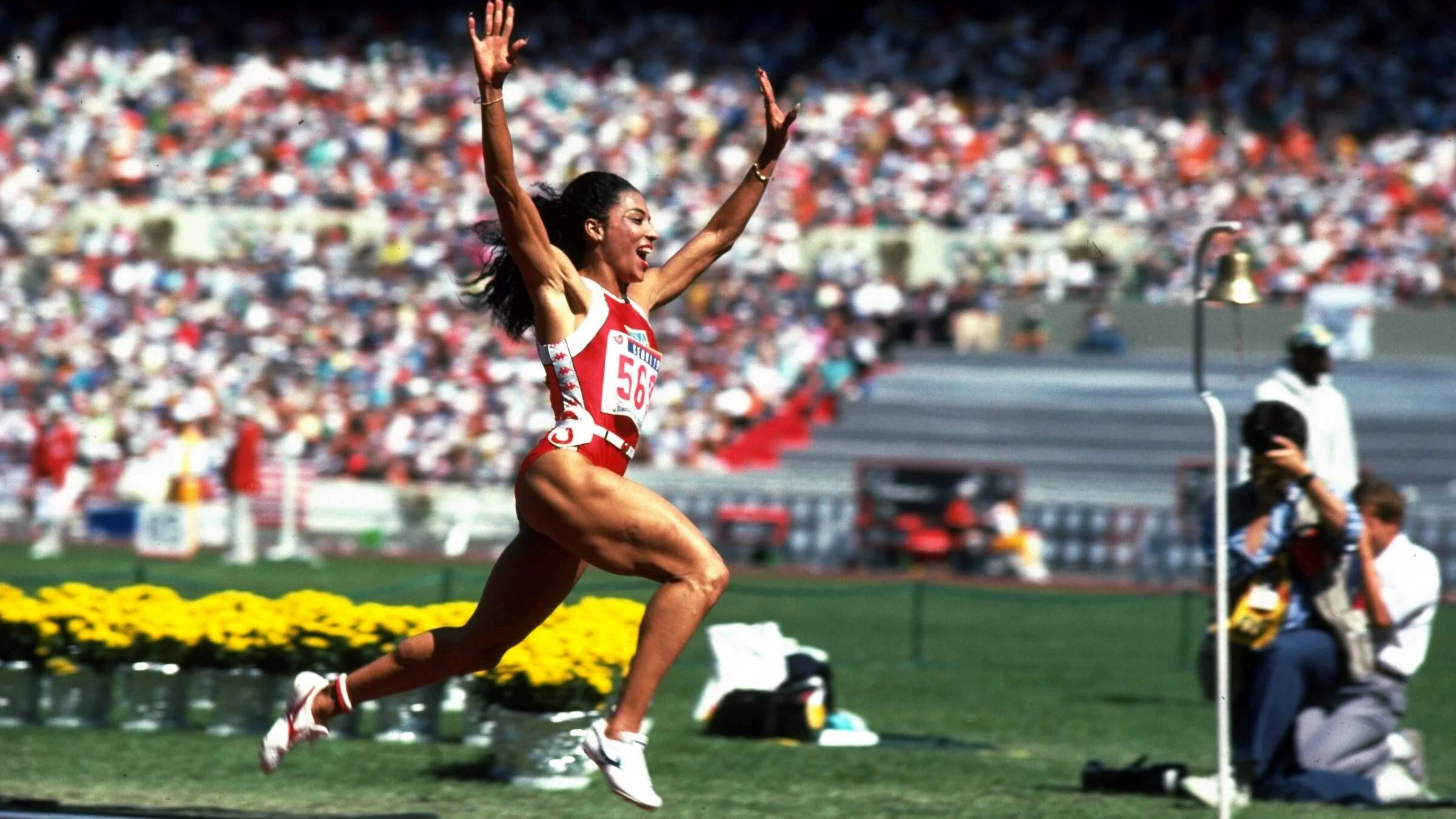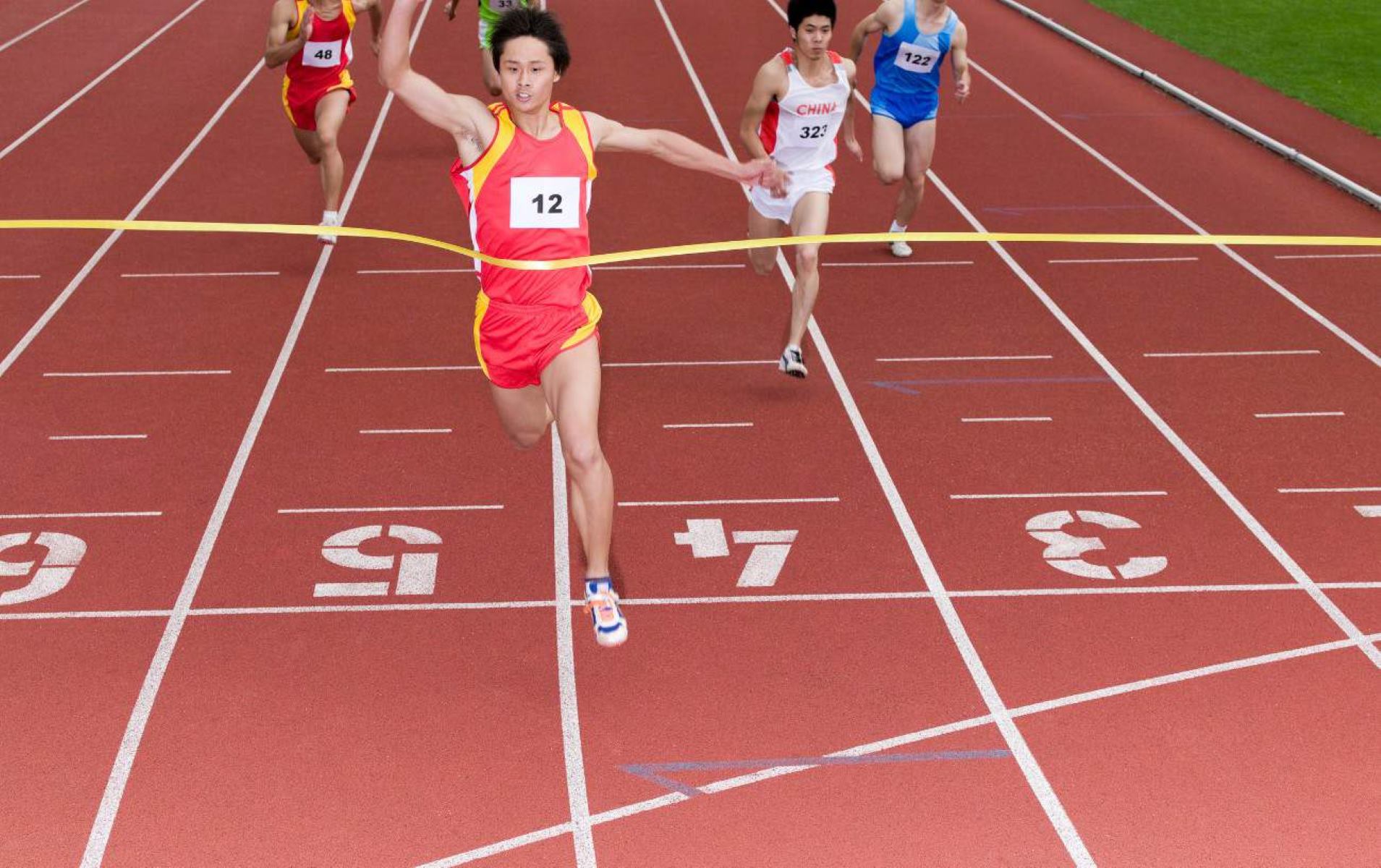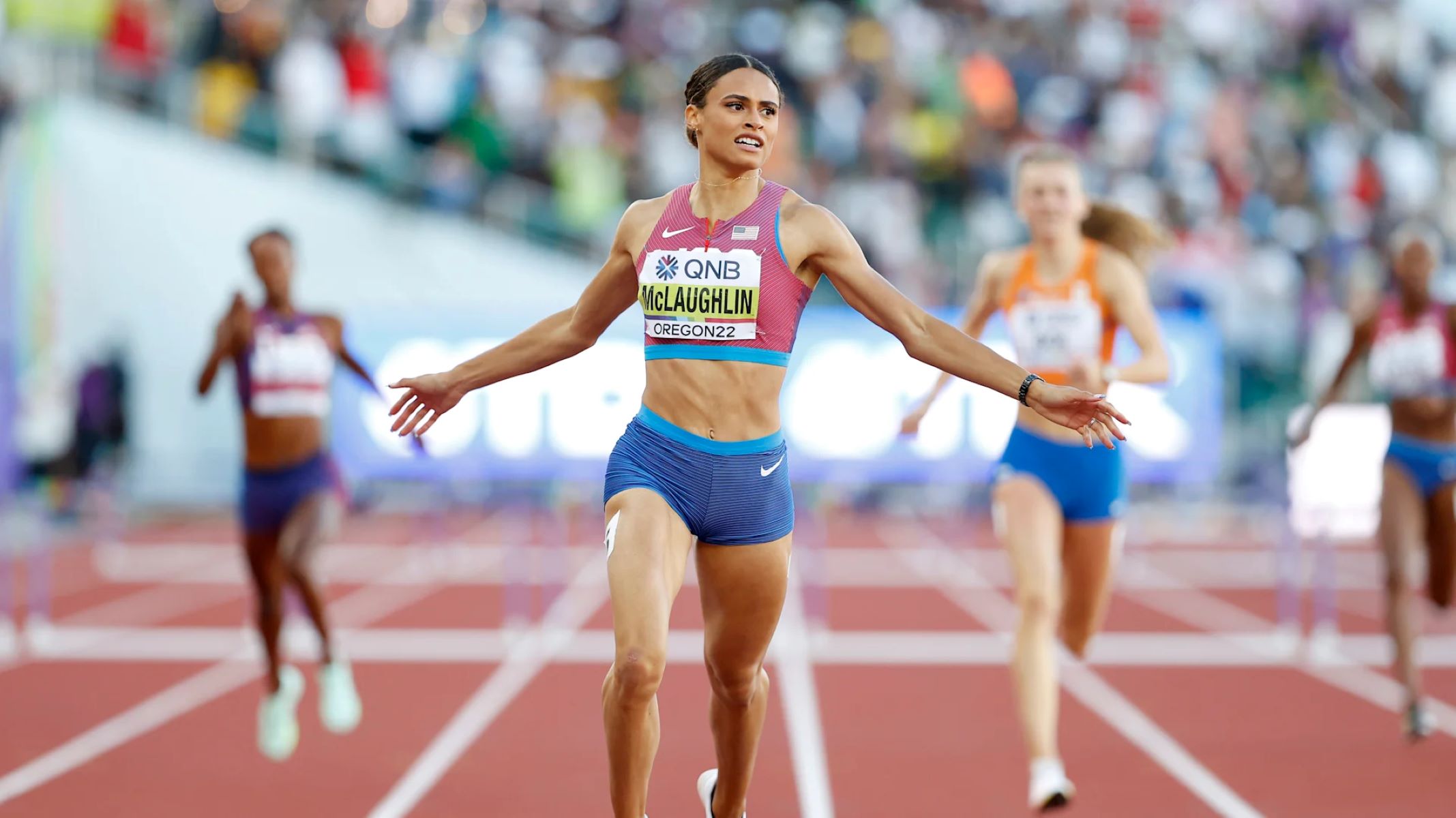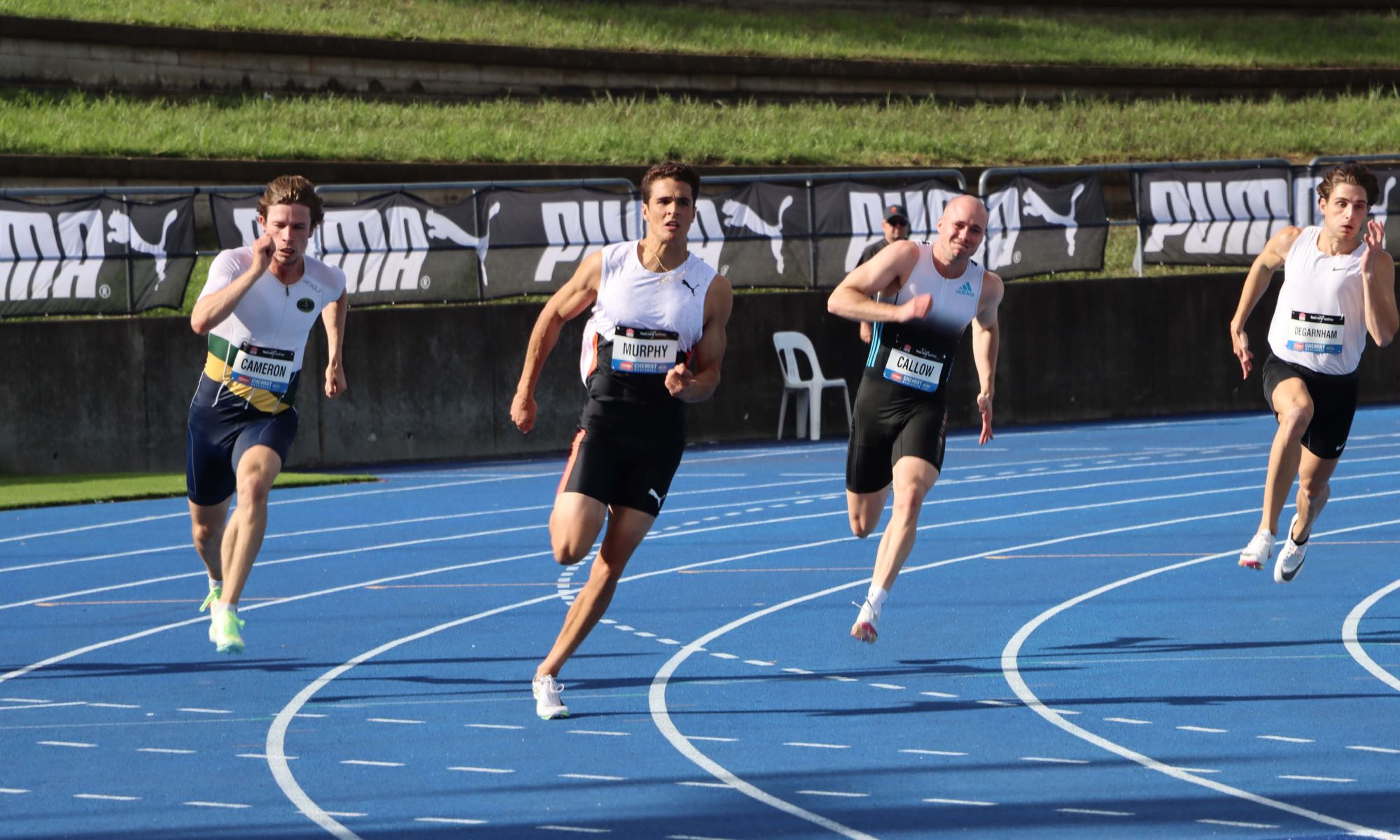

Featured
What Does PB Mean In Track And Field
Published: November 12, 2023
Find out what PB means in track and field! Discover the meaning behind this featured term in the world of athletics.
Introduction
Track and field is a sport that encompasses a wide range of events, from sprints and jumps to throws and relays. Athletes compete against themselves and others, striving to improve their personal bests (PBs) with each competition. But what exactly does PB mean and why is it so important in track and field?
In track and field, PB stands for personal best. It represents an athlete’s best performance in a specific event, such as the fastest time in a sprint or the farthest distance in a long jump. Setting and achieving PBs are fundamental goals for athletes, as they signify progress and growth in their chosen discipline.
A PB is an individual marker of success and improvement, showcasing an athlete’s dedication, hard work, and talent. It serves as a benchmark for future performance and provides motivation to continue pushing boundaries and setting new records.
One of the key reasons why PBs are so significant in track and field is that they allow athletes to measure their progress over time. By comparing their current performance to their previous best, athletes can evaluate their training methods, techniques, and overall development. PBs provide a clear indication of improvement and highlight areas where further practice and refinement are necessary.
Additionally, PBs play a crucial role in competitions, as they determine an athlete’s ranking and success. When athletes achieve a new personal best during a competition, it demonstrates their ability to perform under pressure and rise to the occasion. It can also elevate their standing within their team, school, or even at the national level. PBs are often used as selection criteria for prestigious events and championships, making them an essential focus for dedicated athletes aiming to compete at higher levels.
While the concept of a personal best may seem straightforward, there are various aspects to consider when measuring and improving PBs. Factors such as training methods, biomechanics, equipment, nutrition, psychological mindset, and even external conditions play a role in an athlete’s performance. Understanding these factors and implementing strategies to optimize them can enhance the likelihood of achieving new PBs.
Setting personal goals based on PBs is an effective way for athletes to stay focused and motivated. By having specific targets to work towards, athletes can structure their training programs and monitor their progress. Additionally, the pursuit of breaking PBs fosters a sense of healthy competition within the track and field community, encouraging athletes to push themselves to new heights.
In the following sections, we will explore how PBs are measured, the factors that influence them, strategies for improving them, and the importance of celebrating and recognizing PB achievements.
Definition of PB
In the world of track and field, PB stands for personal best. It refers to an athlete’s best performance in a specific event. Whether it’s running a faster time in a sprint, jumping a greater distance in a long jump, or throwing a farther distance in a javelin throw, the PB represents the pinnacle of an athlete’s achievement in a particular discipline.
A PB is an individual record that reflects an athlete’s progress and growth over time. It serves as a benchmark for measuring improvement and provides a tangible goal for athletes to strive towards. It signifies not only the culmination of hard work and dedication but also the potential for further development and breakthroughs.
The concept of a personal best is intrinsically tied to an athletic career as it captures the essence of an athlete’s journey. It represents the culmination of countless hours of training, overcoming setbacks, and pushing physical and mental boundaries. Each PB attained becomes a stepping stone towards even greater accomplishments.
Furthermore, PBs are not limited to competitive athletes alone. Individuals participating in recreational track and field activities also strive for personal bests. Whether it’s achieving a faster 100-meter dash or clearing a higher height in the high jump, PBs serve as a personal measure of progress and growth, allowing individuals to track their own development and celebrate their achievements.
It is important to note that PBs are specific to each event within track and field. Athletes may have different PBs for various events, depending on their strengths and specialties. For example, a sprinter may have a PB in the 100-meter dash, while also having separate PBs for the 200-meter and 400-meter races.
The significance of PBs extends beyond the individual athlete. PBs often form the basis for ranking athletes within a team, school, or national association. They serve as a performance indicator to identify and select athletes for competitive events, championships, and international representation. Coaches, scouts, and talent spotters use PBs as a measure of an athlete’s potential and talent.
In summary, a PB in track and field represents an athlete’s personal best performance in a specific event. It is a measure of progress, growth, and potential. Attaining a new PB is a testament to an athlete’s dedication, hard work, and resilience. It serves as a tangible goal for athletes to strive towards and provides a sense of accomplishment and satisfaction when achieved.
Importance of PB in Track and Field
Within the world of track and field, personal bests (PBs) hold immense importance. They serve as a fundamental measure of an athlete’s progress, development, and success in their chosen discipline. The importance of PBs can be observed from both individual and competitive perspectives.
At an individual level, PBs provide athletes with a clear benchmark to gauge their improvement. Each new personal best represents a significant milestone in an athlete’s journey, demonstrating their growth and potential. By regularly challenging and surpassing their PBs, athletes can continuously strive to reach new levels of performance.
PBs also serve as a source of motivation and drive for athletes. The pursuit of surpassing one’s personal best fosters a competitive spirit, pushing athletes to work harder, train smarter, and refine their techniques. This motivation extends beyond the track and field arena and can positively impact an athlete’s mindset and approach towards overcoming challenges in various aspects of life.
Furthermore, PBs are crucial for setting individual goals. By analyzing their current PBs and identifying areas of improvement, athletes can set realistic targets that align with their abilities and aspirations. These goals provide a roadmap for training and allow athletes to measure their progress along the way.
From a competitive standpoint, PBs play a vital role in ranking and determining an athlete’s success. Whether at the high school, collegiate, or professional level, achieving PBs significantly impacts an athlete’s standing within their team and the larger track and field community.
PBs often serve as selection criteria for important events and championships, such as qualifiers for national and international competitions. Coaches and selectors closely monitor an athlete’s PBs to identify potential talent and determine who is best suited to represent their team or country on the biggest stage.
In team competitions, PBs are also used to evaluate an athlete’s contribution to the overall performance. Athletes who consistently improve their PBs contribute to the overall success of the team and play a significant role in achieving team goals.
The importance of PBs is further emphasized by the recognition and celebration they receive. Breaking a personal best is a cause for great celebration and applause, both from teammates and coaches, and within the larger track and field community. PB achievements are often highlighted and acknowledged to inspire and motivate other athletes.
Ultimately, PBs serve as a tangible representation of an athlete’s progress, dedication, and commitment to continuous improvement. They provide athletes with a sense of accomplishment, fuel their competitive drive, and act as a catalyst for future success. In the dynamic world of track and field, personal bests are a constant reminder of the endless possibilities and the potential for greatness.
How PB is Measured
Measuring personal bests (PBs) in track and field involves a systematic approach to accurately record an athlete’s best performance in a specific event. The method of measuring PBs can vary depending on the event and the competition level. Here, we will explore some common techniques used to measure PBs in track and field.
Timing plays a crucial role in measuring PBs in sprinting events. Electronic timing systems, such as fully automated timing (FAT), are commonly used to accurately measure an athlete’s time down to the hundredth of a second. These systems consist of photoelectric cells placed at the start and finish lines, which record the athlete’s performance. The times recorded by these systems are considered highly reliable and precise.
In distance running events, such as the 1500 meters or the marathon, timing is also key. In addition to electronic timing systems, other tools such as timing mats placed at specific locations along the course can be utilized to ensure accurate split times are captured. These split times are crucial in determining an athlete’s performance at various stages of the race and can contribute to their overall PB.
For field events, such as the long jump or high jump, measuring distances and heights requires specialized equipment. In the long jump, for example, a tape measure is used to measure the distance from the take-off point to the landing spot in the pit. Similarly, in the high jump, a height bar is used to measure the highest point cleared by the athlete during the jump. These measurements are crucial in establishing an athlete’s PB in these events.
Throwing events, such as shot put or javelin, also require precise measurements. Tape measures or measuring tapes are commonly used to measure the distance thrown or the height achieved by the thrower. In some cases, laser measuring devices may also be employed to ensure accuracy.
It is important to note that in official competitions, PBs are typically measured using standardized and certified equipment to maintain fairness and consistency across all athletes. This ensures that all athletes have an equal opportunity to establish their personal bests and have their achievements recognized.
Advancements in technology have also led to the development of sports performance tracking devices and wearable sensors. These devices can provide athletes with real-time data on various aspects of their performance, such as speed, distance, and technique. While these technologies can be helpful in training and monitoring progress, official PBs are typically measured using the aforementioned standard techniques.
Overall, measuring PBs in track and field requires precise timing, accurate measurements, and standardized equipment. Whether it’s through electronic timing systems, tape measures, or height bars, these tools and techniques play a crucial role in accurately capturing an athlete’s performance and establishing their personal bests.
Factors Influencing PB
When it comes to achieving personal bests (PBs) in track and field, several factors come into play. These factors can have a significant impact on an athlete’s performance and determine whether they can reach new heights in their chosen event. Here are some key factors that influence PBs in track and field.
Training: The type and quality of training an athlete undergoes play a crucial role in their performance. A well-structured training program that focuses on developing specific skills, improving strength and conditioning, and implementing effective recovery protocols can contribute to significant improvements in an athlete’s PBs. Training should be tailored to the specific event, considering the demands of that event and the individual athlete’s strengths and weaknesses.
Technique: Technique is another critical factor that can influence an athlete’s PB. Mastering proper form, mechanics, and execution of the event-specific skills are essential for maximizing performance. Coaches work closely with athletes to analyze and refine their technique, addressing any inefficiencies or weaknesses that may hinder PB improvement.
Physical Fitness: An athlete’s overall physical fitness level, including strength, speed, power, agility, and endurance, plays a crucial role in their PB performance. Developing a well-rounded fitness foundation ensures that athletes have the necessary physical capabilities to excel in their chosen event. Regular strength and conditioning training, cardiovascular fitness, and flexibility exercises contribute to improved performance and PB achievement.
Mental Preparation: The mental aspect of competition must not be overlooked. Mental preparedness and focus can significantly impact an athlete’s performance. Developing mental resilience, visualization techniques, and effective strategies for managing stress and performance anxiety can play a crucial role in unlocking an athlete’s true potential and achieving PBs.
External Factors: External factors, such as weather conditions, competition environment, and equipment, can also influence an athlete’s PB. Ideal weather conditions, such as favorable wind direction or temperature, can provide advantageous conditions for achieving better results. The competition environment, including the atmosphere, crowd support, and competitive field, can also impact an athlete’s performance. Additionally, access to high-quality equipment and facilities can contribute to better training and performance outcomes.
Nutrition and Hydration: Proper nutrition and hydration are vital for optimal athletic performance. Providing the body with the right balance of nutrients and maintaining proper hydration levels ensure that athletes have the energy, stamina, and recovery necessary to reach their PBs. A well-balanced diet that includes carbohydrates, proteins, fats, vitamins, and minerals can fuel the body and support muscle repair and growth.
Injury Prevention and Recovery: Injuries can significantly impede an athlete’s progress and prevent them from achieving their PBs. Therefore, incorporating injury prevention strategies, such as proper warm-up and cool-down routines, rest and recovery protocols, and regular stretching or mobility exercises, is essential. Addressing any existing injuries promptly and seeking appropriate medical attention is crucial for maintaining optimal performance.
Overall, achieving PBs in track and field is dependent on a combination of factors, including training, technique, physical fitness, mental preparation, external factors, nutrition, and injury prevention. Understanding and optimizing these factors can contribute to improved performance outcomes and aid athletes in reaching their full potential.
Setting Personal Goals based on PB
Setting personal goals based on personal bests (PBs) is an essential aspect of an athlete’s journey in track and field. PBs provide athletes with tangible benchmarks to strive for, allowing them to set specific, measurable, attainable, relevant, and time-bound (SMART) goals. Here are some key reasons why setting personal goals based on PBs is crucial.
Clear Focus and Direction: PBs provide athletes with a clear focus and direction in their training and competition. By identifying specific PBs to aim for, athletes can structure their training programs and develop strategies to achieve those goals. This process helps athletes maintain motivation and enthusiasm, as they have a clear target to work towards.
Measurable Progress: Setting goals based on PBs allows athletes to measure their progress accurately. Whether it’s shaving off milliseconds in a sprint or increasing the distance jumped in a long jump, the improvement in PBs serves as a measurable indicator of progress. Athletes can track their development over time and celebrate incremental improvements as they work towards their ultimate goal.
Adaptation and Resilience: Setting PB-based goals presents athletes with the opportunity to adapt and develop resilience. As athletes strive to achieve their PBs, they may encounter setbacks and challenges. By setting goals that are based on PBs, athletes are compelled to bounce back from failures, learn from mistakes, and adapt their strategies to overcome obstacles. This process fosters mental toughness and resilience in the face of adversity.
Motivation and Commitment: Setting personal goals based on PBs provides athletes with intrinsic motivation and commitment. The pursuit of surpassing their PBs acts as a driving force, pushing athletes to give their best effort in training and competition. Having a clear goal in mind helps athletes stay dedicated and disciplined in their pursuit of improvement.
Enhanced Focus and Engagement: Goals based on PBs promote enhanced focus and engagement in training and competition. Athletes become more attentive to the details of their performance, seeking ways to refine their technique, optimize their training methods, and make necessary adjustments to reach their PBs. This heightened focus and engagement ultimately lead to improved performance outcomes.
Stretching Limits and Unlocking Potential: PB-based goals encourage athletes to push beyond their comfort zones and explore their limits. By setting ambitious goals that are based on surpassing their current PBs, athletes challenge themselves to tap into their full potential. This process can lead to breakthrough performances and uncover untapped abilities that may have otherwise gone unnoticed.
Resonance with Competition: Competitions in track and field often revolve around beating personal bests. Setting goals based on PBs allows athletes to align their goals with the competitive nature of the sport. Achieving PBs in a competition setting provides a sense of accomplishment and sets the stage for further success at higher levels of competition.
In summary, setting personal goals based on personal bests in track and field provides athletes with focus, motivation, and a clear direction. It enables them to measure their progress, adapt to challenges, and unlock their full potential. By striving to surpass their PBs, athletes can experience growth, personal satisfaction, and a sense of fulfillment in their track and field journey.
Strategies for Improving PB
Improving personal bests (PBs) in track and field requires a strategic and systematic approach. Here are some effective strategies that athletes can implement to enhance their performance and achieve new PBs:
1. Goal Setting: Set specific, measurable, attainable, relevant, and time-bound (SMART) goals based on your PBs. Break down your goals into short-term and long-term targets to ensure consistent progress and provide a clear roadmap for improvement.
2. Proper Training: Develop a well-rounded training program that incorporates a mix of endurance, strength, speed, and technique-specific workouts. Work closely with a coach or trainer who can design a customized training plan tailored to your event, addressing your weaknesses while capitalizing on your strengths.
3. Technique Refinement: Continuously work on refining your technique in your chosen event. Analyze video footage, seek input from coaches, and focus on mastering proper form and execution. Small adjustments and improvements in technique can lead to significant gains in performance.
4. Periodization: Implement a periodization training approach that includes different phases targeting different aspects of fitness, such as endurance, speed, and power. This structured approach allows for optimal performance gains while reducing the risk of overtraining and injuries.
5. Mental Preparation: Develop mental strategies to enhance focus, concentration, and confidence. Visualize successful performances, practice positive self-talk, and employ relaxation techniques to manage competition pressure and elevate your performance to new heights.
6. Nutrition and Hydration: Maintain a well-balanced diet that provides the necessary fuel and nutrients for sustained energy and recovery. Adequate hydration before, during, and after training and competition is also crucial for optimal performance.
7. Rest and Recovery: Allow sufficient time for rest and recovery to allow your body to heal, repair, and adapt to the training stimulus. Incorporate regular rest days, prioritize quality sleep, and engage in active recovery activities such as stretching, foam rolling, and massage.
8. Strength and Conditioning: Incorporate strength and conditioning exercises into your training routine to improve power, speed, agility, and overall athletic performance. Focus on movement patterns that are specific to your event and tailor exercises to target muscle groups used during competition.
9. Competition Strategy: Develop effective competition strategies specific to your event. Understand the dynamics of your race, pace yourself strategically, and execute your plan with precision. Analyze past performances and learn from experiences to make informed decisions during competition.
10. Feedback and Evaluation: Regularly assess and evaluate your progress through performance analysis, timing data, and feedback from coaches and teammates. Use this information to identify areas for improvement and make necessary adjustments to your training and competition strategies.
11. Consistency and Patience: Improving PBs requires time and consistent effort. Be patient with the process and stay committed to your training and goals. Even small incremental improvements can lead to significant changes over time.
12. Seek Support: Surround yourself with a supportive team of coaches, teammates, and mentors who can provide guidance, motivation, and encouragement throughout your journey. Collaborate with experts in the field to seek advice on training methods, nutrition, and recovery techniques.
By implementing these strategies and staying dedicated to your training, you can maximize your potential, overcome limitations, and ultimately achieve new PBs in your track and field events.
Celebrating and Recognizing PB Achievements
Celebrating and recognizing personal best (PB) achievements in track and field is an important aspect of an athlete’s journey. It not only provides a sense of accomplishment and satisfaction but also serves as motivation to continue pushing boundaries and striving for even greater success. Here are some reasons why celebrating and recognizing PB achievements is crucial:
1. Acknowledgment of Hard Work: Achieving a new PB is the result of countless hours of training, dedication, and perseverance. Celebrating PB achievements acknowledges and honors the hard work and sacrifices that athletes have put into their sport. It validates their commitment and serves as a reminder of their achievements.
2. Motivation for Further Progress: Recognizing PB achievements provides athletes with a source of motivation to continue their pursuit of excellence. The celebration of past successes fuels the desire to set higher goals, conquer new challenges, and strive for even better performances in the future.
3. Boost in Confidence: Celebrating PB achievements helps build confidence in athletes. It reinforces their belief in their abilities and gives them the assurance that they are on the right path to success. Increased confidence can have a positive impact on an athlete’s mindset and performance, leading to even greater accomplishments.
4. Inspiring Others: Celebrating and publicly recognizing PB achievements inspires other athletes within the track and field community. When athletes share their successes, it motivates and encourages others to work towards their own personal bests. These celebrations foster a culture of growth, support, and healthy competition.
5. Marking Milestones and Progress: Celebrating PB achievements allows athletes to mark milestones and track their progress. It provides a tangible record of improvement and growth, serving as a visual representation of the athlete’s journey in their sport. These milestones become important benchmarks for future goal setting and serve as a reminder of past accomplishments.
6. Building a Positive Team Environment: Celebrating PB achievements within a team creates a positive and supportive team environment. Recognizing each other’s successes fosters camaraderie, teamwork, and a collective celebration of achievements. This positive team atmosphere can further enhance motivation and overall team performance.
7. Validation of Talent and Potential: Celebrating PB achievements validates an athlete’s talent and potential. It signifies that they are on the right track and making progress towards reaching their full potential. This validation can boost an athlete’s self-belief and encourage them to continue striving for excellence.
8. Recognition from Coaches and Peers: Recognizing PB achievements gives coaches and teammates the opportunity to acknowledge an athlete’s hard work and dedication. It allows them to provide support, encouragement, and feedback on the athlete’s performance. This recognition from coaches and peers reinforces the athlete’s commitment and fosters a supportive network.
9. Perseverance and Resilience: Celebrating PB achievements highlights an athlete’s resilience and perseverance in the face of challenges and setbacks. It sends a powerful message that hard work and determination pay off, even in the most difficult circumstances. This recognition serves as a reminder of the athlete’s ability to overcome obstacles and inspires them to continue pushing forward.
10. Appreciation of the Sport: Celebrating PB achievements is also a way to show appreciation for the sport of track and field. It recognizes the importance of personal growth, improvement, and the pursuit of excellence. By celebrating PB accomplishments, we not only celebrate the individual athlete but also the sport itself and its values.
In summary, celebrating and recognizing PB achievements in track and field is a way to honor an athlete’s hard work, provide motivation for further progress, boost confidence, inspire others, mark milestones, build a positive team environment, validate talent and potential, and acknowledge resilience. It plays a crucial role in an athlete’s journey and creates a positive and empowering culture within the track and field community.
Conclusion
Personal bests (PBs) hold great significance in the world of track and field. They are not just mere records of an athlete’s performance but represent milestones of growth, progress, and potential. PBs serve as benchmarks for improvement and provide a tangible goal to strive for in training and competition. Whether it’s breaking a personal record in a sprint, achieving a greater distance in a long jump, or throwing farther in a javelin event, PBs are a testament to an athlete’s hard work, dedication, and resilience.
Celebrating and recognizing PB achievements is vital not only to acknowledge an athlete’s efforts but also to inspire others within the track and field community. It fosters a culture of growth, perseverance, and healthy competition. By setting personal goals based on PBs, athletes can focus on continuous improvement and push beyond their limits.
Achieving PBs requires a multifaceted approach. Factors such as training, technique, physical fitness, mental preparation, external conditions, nutrition, and injury prevention play a crucial role in an athlete’s performance. Implementing strategies like goal setting, proper training, technique refinement, and mental preparation can contribute to improved performance outcomes and PB achievement.
Measuring PBs involves precise timing, accurate measurements, and standardized equipment. It ensures fairness and consistency among all athletes and allows for proper comparison and recognition. PBs also impact an athlete’s ranking and success in competition, serving as selection criteria for prestigious events and championships.
Celebrating and recognizing PB achievements is a way to validate an athlete’s hard work, boost confidence, inspire others, and mark milestones of progress. It creates a positive and supportive team environment, encourages perseverance and resilience, and honors the pursuit of excellence within the track and field community.
In conclusion, personal bests are more than just numbers; they represent the dedication, growth, and potential of athletes in track and field. By setting goals, implementing effective strategies, and celebrating PB achievements, athletes can continuously strive for improvement and embrace the journey towards reaching their full potential in their chosen discipline.

